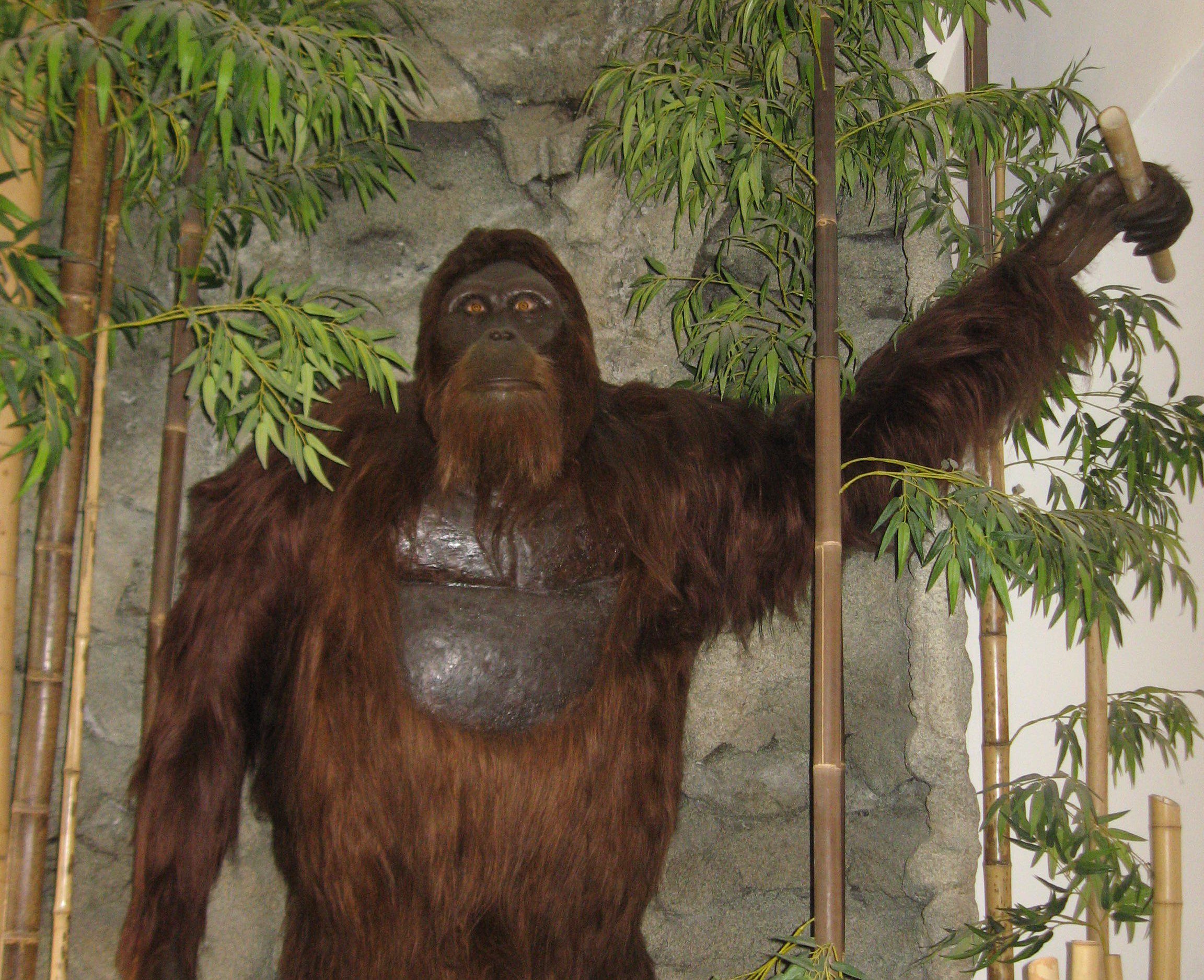Gigantopithecus is the largest ape that ever walked on Earth. For over 1.7 million years, this giant – and deeply mysterious – gorilla-like beast ruled the forests of eastern Asia, but it still manages to capture our imagination and stir curiosity even today.
When did Gigantopithecus go extinct?
Rest assured, you won’t be finding any Gigantopithecus stomping around Earth today.
The extinct ape is believed to have lived in eastern Asia from roughly 2 million years ago until it fell into extinction around 300,000 years ago during the Early to Middle Pleistocene.
Some estimates say the species went extinct around 100,000 years ago – which, if true, would mean they co-existed with Homo sapiens – but this evidence is not widely agreed on.
The first evidence of Gigantopithecus came in the form of teeth that were bought from a traditional Chinese drugstore in Hong Kong by anthropologist Ralph von Koenigswald in 1935. Labeled as “dragon teeth,” von Koenigswald discovered the molars belonged to a newly identified species of extinct ape he called Gigantopithecus.
Only a single species of the Gigantopithecus genus has ever been identified: G. blacki. Since its discovery almost 90 years ago, researchers have documented around 2,000 teeth and four partial jaw bones which they believe belonged to Gigantopithecus.
Most of these discoveries have been collected from cave sites in southern China, although there is also a lot of evidence of the species from northern Vietnam and northern Thailand.
Why Did Gigantopithecus Go Extinct?
It’s not certain why Gigantopithecus went extinct but it was likely due to changing environmental conditions affecting its food supply.
Despite its ferocious appearance, the species almost certainly ate a vegetarian diet with a strong appetite for bamboo. This limited diet indicates that Gigantopithecus exclusively lived in forested regions at a time when this part of Asia was covered in pockets of both savanna and forest.
Research has suggested that climatic change occurred around the time of Gigantopithecus’ extinction, resulting in the forested areas drying up into savanna. While it looks like many other animals managed to adapt, Gigantopithecus was too much of a fussy eater, and its limited diet may have meant it effectively starved into extinction.
How big was Gigantopithecus?
It’s widely accepted that Gigantopithecus was around 3 meters (9 feet 10 inches) tall with a weight of around 200 to 300 kilograms (440 to 660 pounds).
This is only an estimation since the measurements are based on the size of the few fossils we have discovered, which are predominately teeth. However, scientists have built up a relatively sturdy picture of this animal.
Genetic evidence has shown that Gigantopithecus shares a common ancestor with the genus Pongo, better known as the Orangutan, the ginger-furred great ape found in the rainforests of Indonesia and Malaysia.
Now found only in pockets of Borneo and Sumatra, Orangutans once lived throughout Southeast Asia and South China during the Pleistocene, much like Gigantopithecus.
However, most tend to imagine this beast as a gorilla-like animal, albeit considerably taller than a modern-day ape, around the size of a polar bear standing on its hind legs.
Does Bigfoot Exist?
Despite the limited evidence that H. sapiens ever crossed paths with a living, breathing Gigantopithecus, many people suspect the extinct ape has lived on through our culture.
Does the thought of a mysteriously vast ape lumbering through the mountains sound familiar to you? Over the years, it’s often been suggested that Gigantopithecus may have been the inspiration for the ape-like creatures that inhabit humans’ folklore, such as Bigfoot, the Yeti, and the sasquatch.
Even today, this mysterious creature still stirs our imagination. In the 2016 remake of The Jungle Book, King Louie is portrayed as a colossal Gigantopithecus, much larger than his orangutan-like appearance in the 1967 Disney cartoon. Scientifically speaking, this change of casting is perhaps more accurate since orangutans are not native to India, where the story is set, but there’s more of a chance Gigantopithecus once wandered there.
All “explainer” articles are confirmed by fact checkers to be correct at time of publishing. Text, images, and links may be edited, removed, or added to at a later date to keep information current.
Source Link: What Was Gigantopithecus? The Largest Ape To Ever Walk Earth
